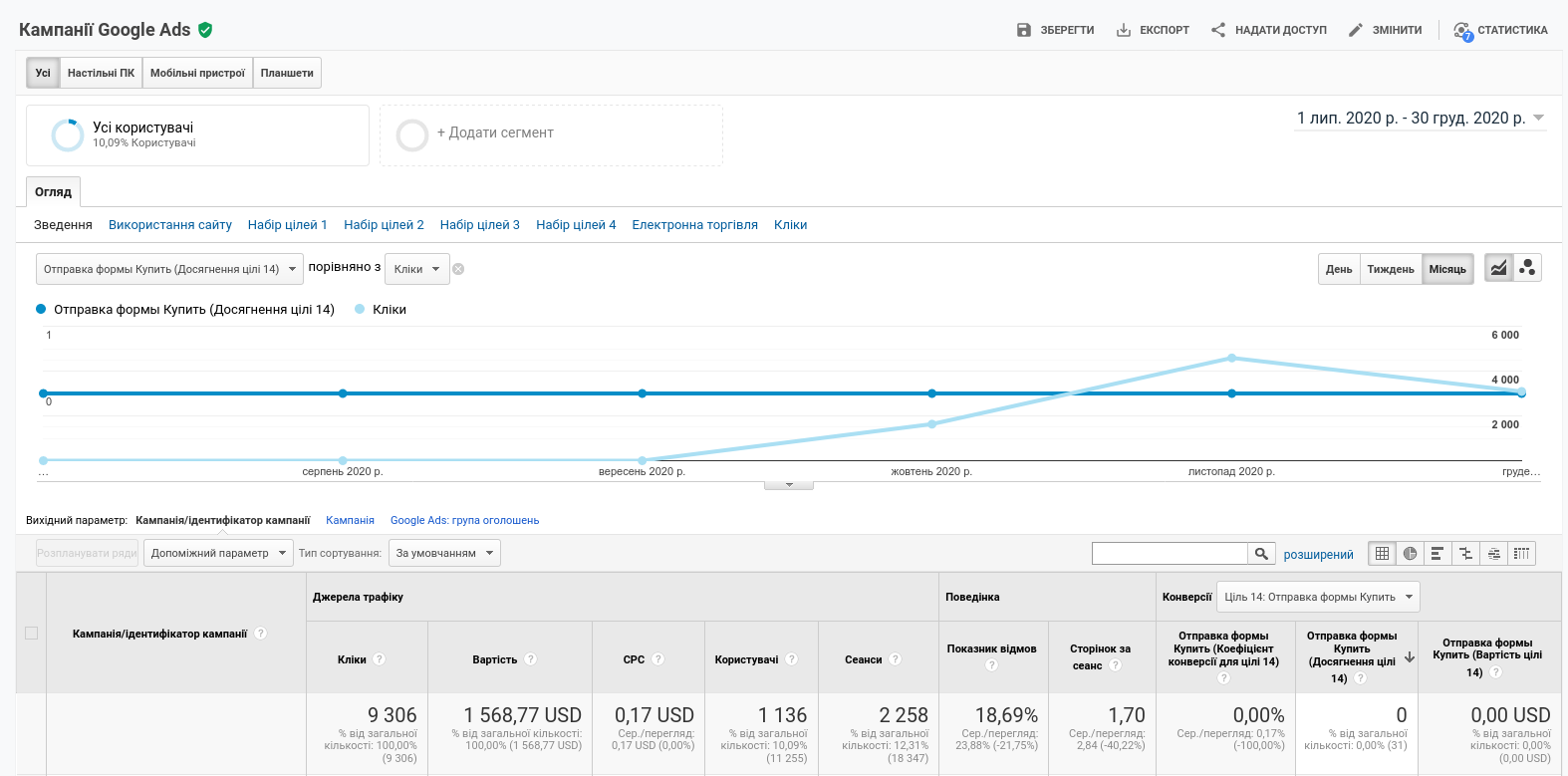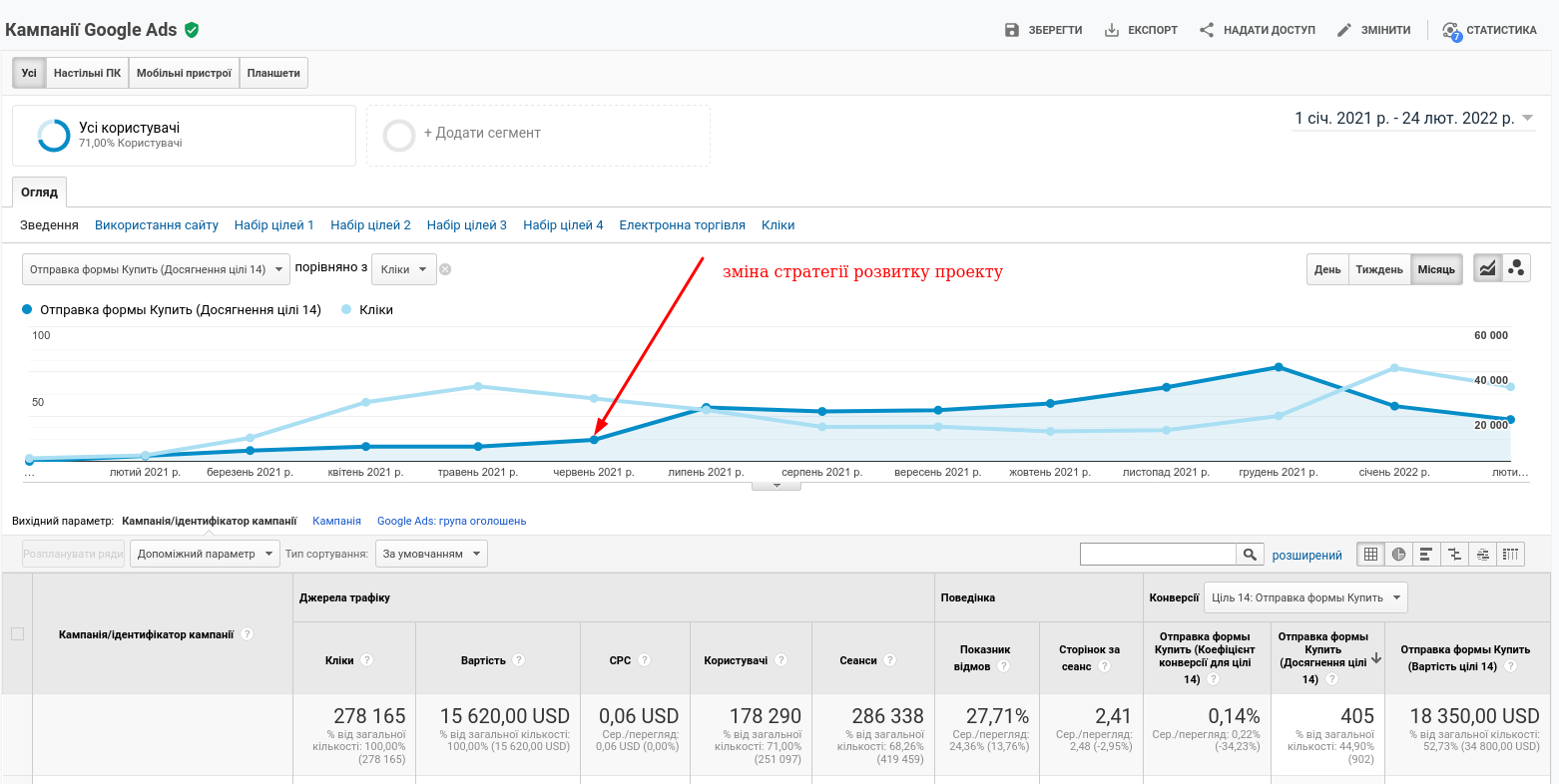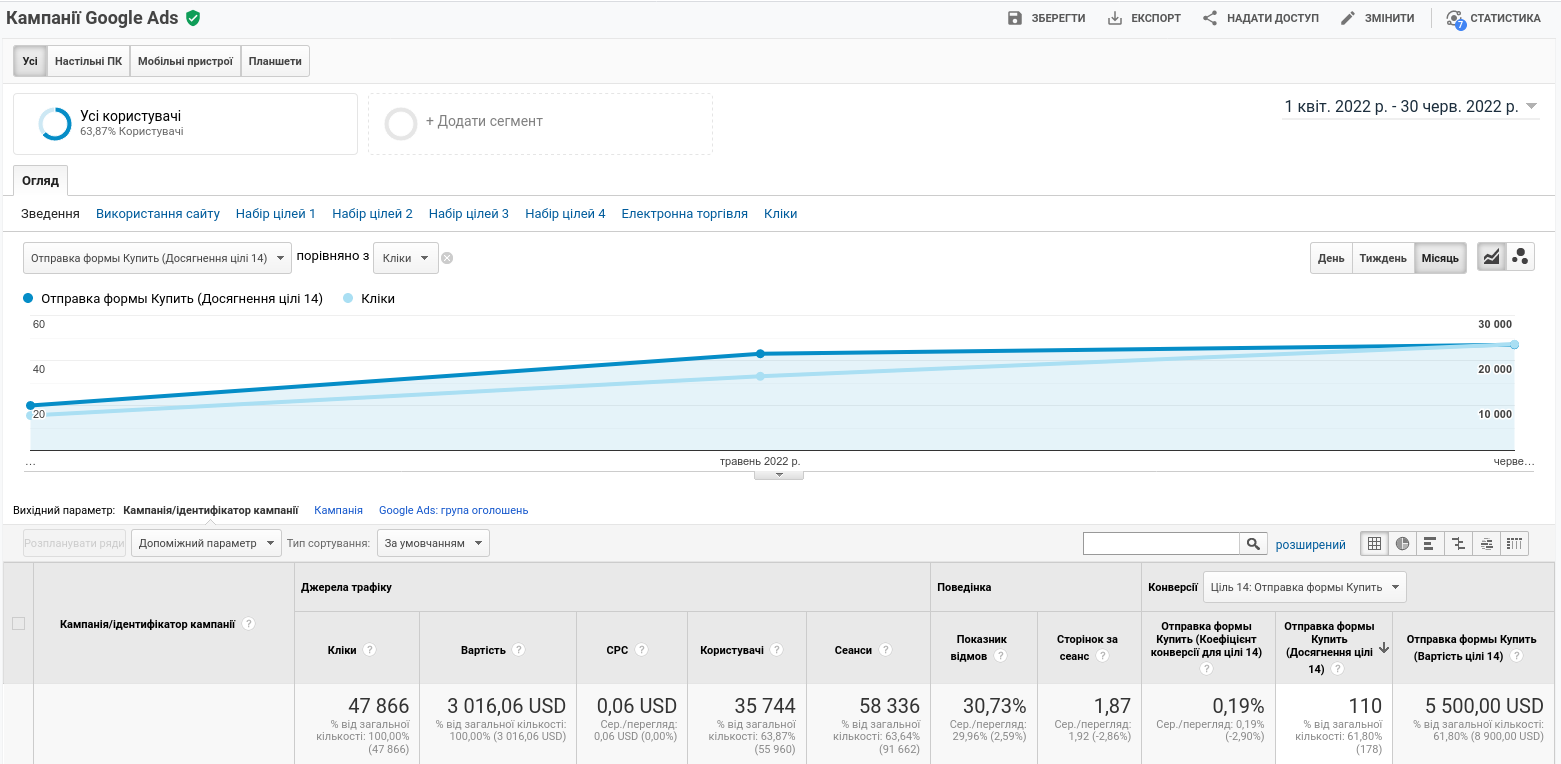“Contextual advertising in my niche does not work.” Most often this statement can be heard from representatives of the following business areas:
- B2B services
- Luxury-segment services and goods
- Development
- IT outsourcing
- Agrarian enterprises
- Manufacturing (from retail equipment to underwear manufacturing)
- Beauty industry services (plastic surgery and injection procedures)
As you have already guessed, this list has no end, and each businessman says about the uniqueness and exclusivity of his area. Usually, the percentage of advertisers confident that contextual advertising is an effective tool for attracting potential customers is small. Most are skeptical before launching campaigns. Some are because of previous negative experiences with Google Ads, and others simply don’t want to spend money without a 100% guarantee of results.
Diving into the theme of changing the attitude of advertisers to contextual advertising, the Aweb agency has a representative case in its portfolio. For a long time, our team of SEO specialists worked with the client, and the client was satisfied with the results of cooperation, but he always refused the proposals to run contextual advertising. Two years ago, in July 2020, after a long “siege” on the project manager’s side, the client with a large degree of skepticism agreed to launch contextual advertising. This gesture was more a show of respect for the project manager than confidence in a positive result. What happened over the next two years and whether the Aweb team justified the client’s trust, we tell you in this case.
Client
Multi-brand online store (rather an online catalog) of accessories and jewelry of the Luxury segment (Cartier, Tiffany & Co, Mikimoto).
Project features:
- high average check (=>12,000 USD);
- floating prices due to unstable currency exchange rates;
- difficulties with online payment (the cost of certain items > 500,000 UAH, so Ukrainian banks block such transactions);
- presence on the site of discontinued models that can no longer be purchased, but the client leaves them active to offer analogs or services to find a model in private collections;
- no possibility to connect call tracking.
Project goal
To provide the index of the client’s attraction cost < 600 USD.
Client’s attraction cost = advertising costs / sales amount
Project development chronology
The history of project development can be divided into 3 stages:
July 2020 — December 2020
January 2021 — February 2022
April 2022 — June 2022
 |
The first stage is setting up and looking for options to pass moderation.Time frame: from July 15, 2020, to December 31, 2020 |

The client’s site has approximately 30,000 SKU’s, so setting up search campaigns may have taken away too many resources, and given the client’s skepticism, the team decided to start with setting up a shopping campaign to speed up the launch. We decided to launch search campaigns while maintaining an advertising account for a few months. However, if you look at the screenshot from Google Analytics, you will realize that things didn’t go as planned.
Because of the specifics of products in the Luxury segment, it was only possible to launch an advertising campaign after 3 months. The work of this period was mainly focused on communicating with Google managers. The main task is to balance the requirements of the advertising system, the wishes of the client, and the needs of the audience in the product cards’ wording.
In general, during this time we experienced:
- 2 Merchant Center account blocks;
- about 18 mass rejections of all products and ads;
- over 10 variants of online payment connection (the client even added the possibility to pay in Bitcoins);
- about 40 content edits on the site.
Normally, it might take 2-3 weeks to solve these problems, but at that time, due to quarantine restrictions, Google ad system support considered the issue for more than two weeks, instead of the usual 3 days.
The only achievement of the period is that the campaigns are up and running, so we started getting traffic. Despite the skepticism, the client was sympathetic to the problems we encountered and coordinated the implementation of the necessary edits. Most likely, the PPC team was saved by the client’s share of trust built up by their colleagues in the SEO department.
 |
The second stage is the phase of active development and testing of methods of promotion of Luxury-segment goods.Time frame: from January 1, 2021, to February 24, 2022 |
The work done during this period:
- set up separate DSA campaigns with segmentation on levels: Category, Brand, Product Type, Product Model; groups with a specific model’s target URL showed the highest effectiveness;
- launched campaigns in CMN with adaptive ads and images of the most popular and recognized models of accessories and jewelry: recognized models increased the CTR of media campaigns;
- launched priority search campaigns based on search queries from DSA campaigns with conversions: an effective way to avoid wasting time on gathering semantics for 30,000 products and launch a campaign with proven effectiveness;
- extended text ads were replaced with adaptive search ads: improves CTR and reduces CPC;
- set up and launched Smart-campaigns in CMN: a lot of cheap traffic and low conversion rate but cost of conversion is lower than average in an account;
- Discovery campaign was configured: unfortunately, it was not effective, so it was suspended after a month;
- tested targeting options for media and video campaigns on themes, keywords, lists of sites, and YouTube channels.
In June 2021, there was a change in the development strategy for the project. Due to the lack of a call tracking system and implementation of end-to-end analytics, the optimization of advertising campaigns was aimed only at increasing the number of conversions. This resulted in the PPC team and the client having different ideas about the effectiveness of the campaigns. The PPC team, guided by the metrics of the advertising cabinet and Google Analytics, was confident in the positive dynamics of the project; the client, guided by the metrics of actual sales in the CRM, was not.
After discussing the situation, we set up a system of exchanging data on the quality of requests and the movement of leads through the funnel in manual mode.
Synchronization of the data allowed us to significantly improve the effectiveness of contextual advertising: on the Google Analytics result chart, the moment the strategy was changed is immediately noticeable.

 |
The third stage is the resumption of the advertising account after the stoppage due to the Russian invasion of Ukraine.Time frame: from April 1, 2022, to June 30, 2022 |
The client was able to reformat his business incredibly quickly, so in April we started working with expanded geography. Before the war, contextual advertising worked to attract clients only from Ukraine, and in April we began working with 10 more countries.
The work of this period:
- analysis of demand and the competitive environment in new markets;
- actualization of goods and brands for promotion based on the analysis results;
- launch of Performance Max campaigns;
- launch of video campaigns;
- updating prices and other indicators;
- setting up additional campaigns for new products and brands that appeared on the project during the pause.
Because the client was able to quickly resume operations and reformat his business into new markets, we were able to regain the previous level of effectiveness of advertising campaigns in two months.
Conclusion
If you remember how the contextual advertising setup began, it’s hard to believe that the client survived the ordeal and did not stop cooperating. The main factors that contribute to a positive outcome:
- the project manager and his confidence that the approach will work and the client will get a positive result;
- the client, despite his status and experience in business, has trusted professionals in an area in which he has a low level of expertise;
- a common view of the work processes on both sides: the client’s team and the agency’s team; without “wars” between the marketing and sales departments, shifting the responsibility and finding the guilty party. All efforts are aimed at achieving results.
So, if in the past you had a negative experience with contextual advertising, and now you are confident that this option will not work for your business — remember this case. Maybe the team you selected did not have enough experience and persistence in their work, or you stopped early, or maybe at that time, the advertising technology was not as effective as it is now.
And if you have the desire to try again — the Aweb team of PPC specialists is at your service!


